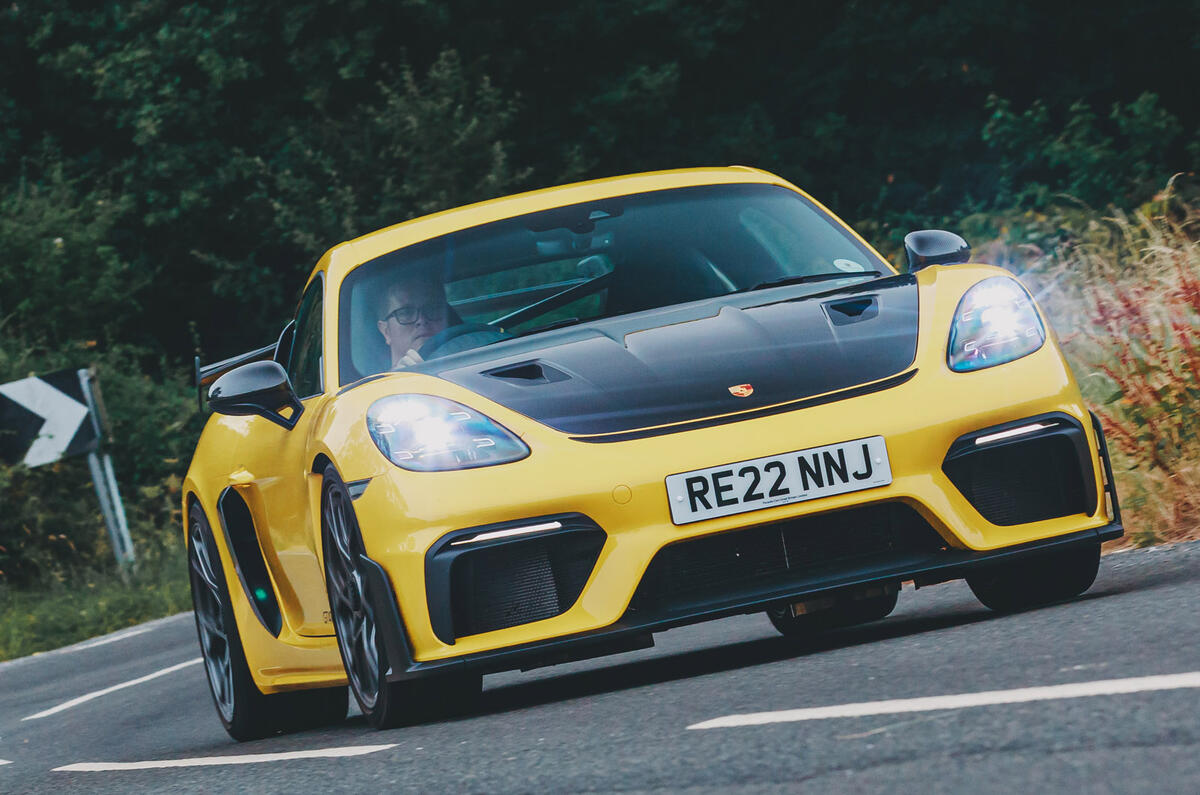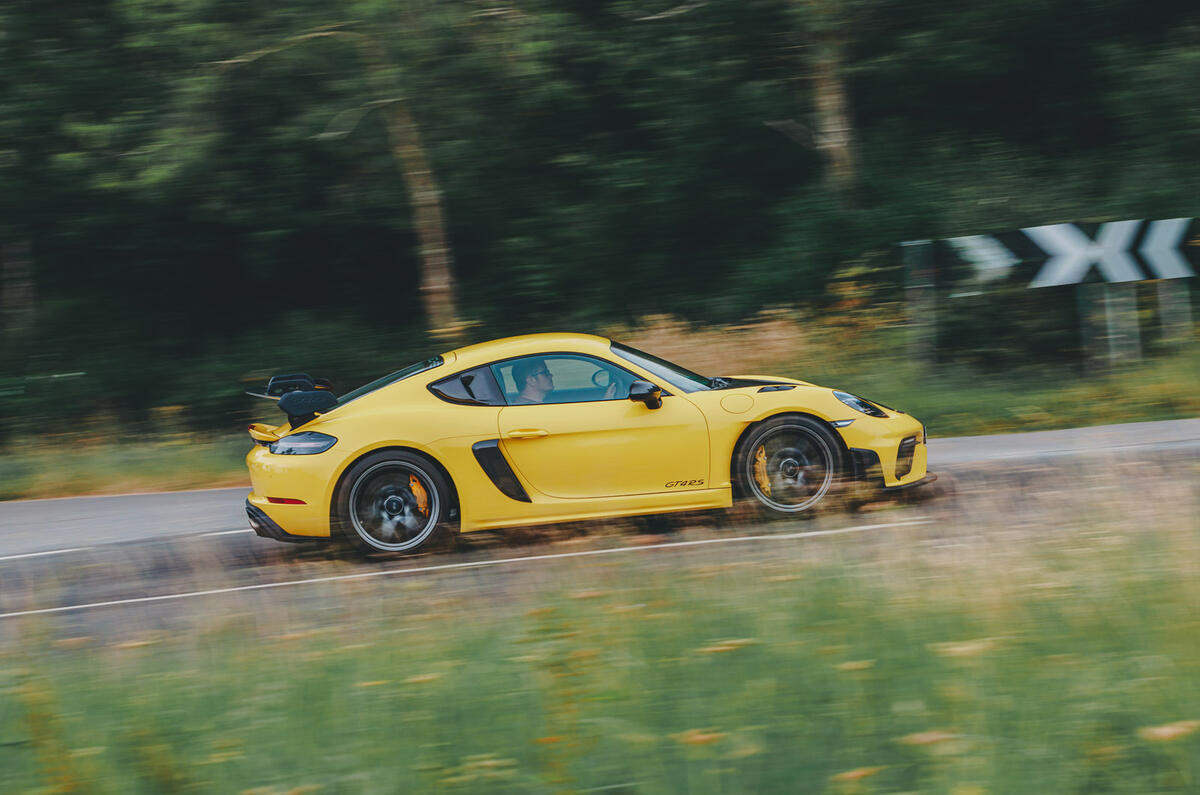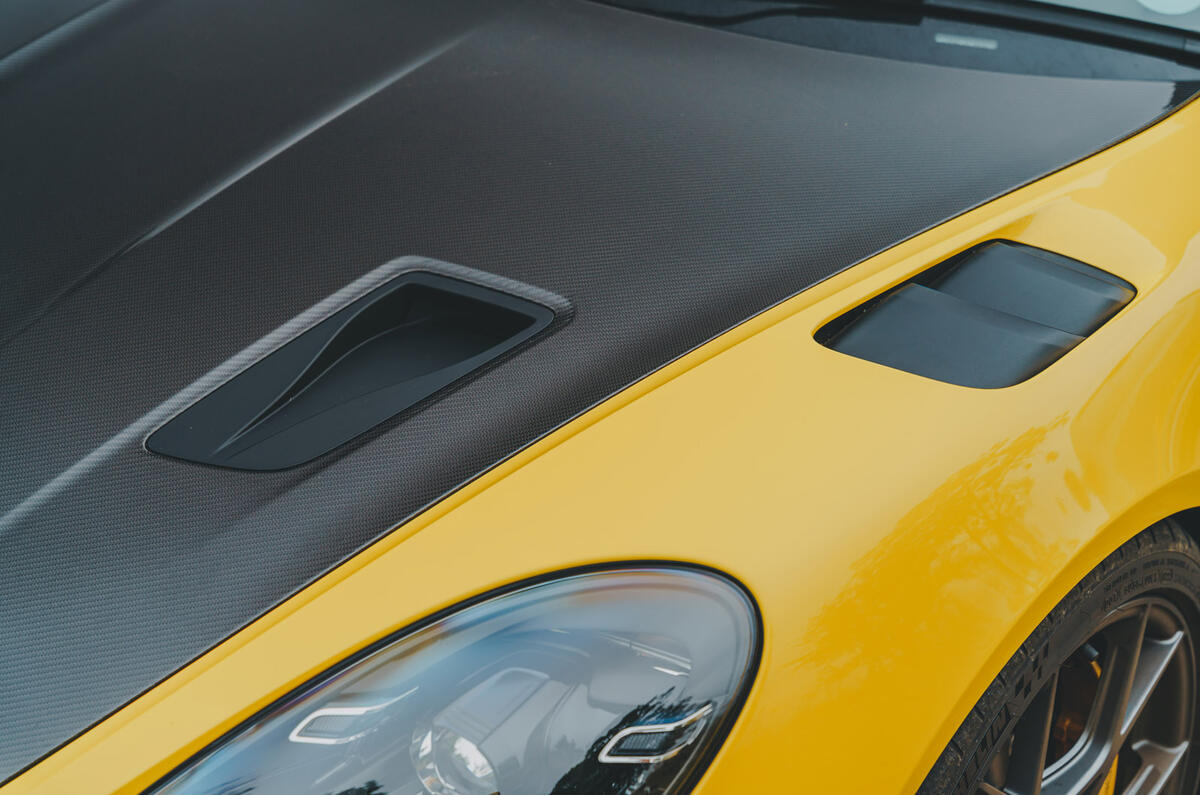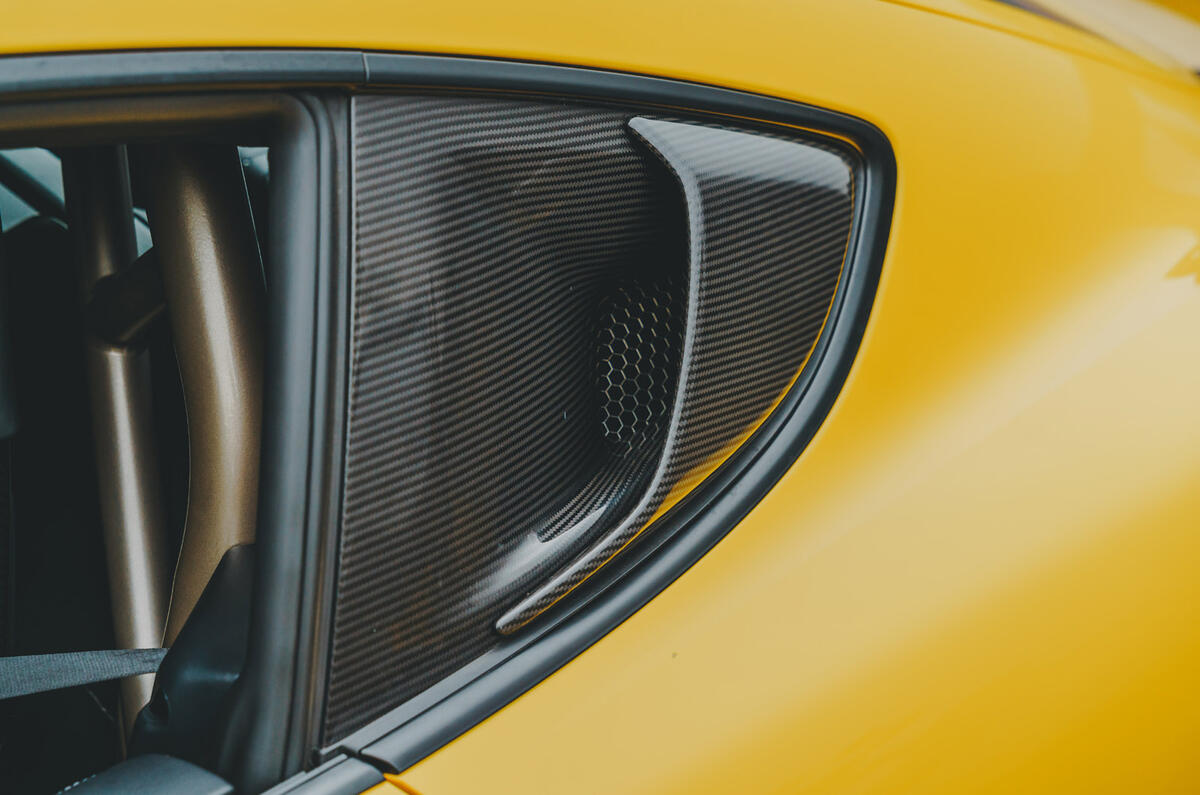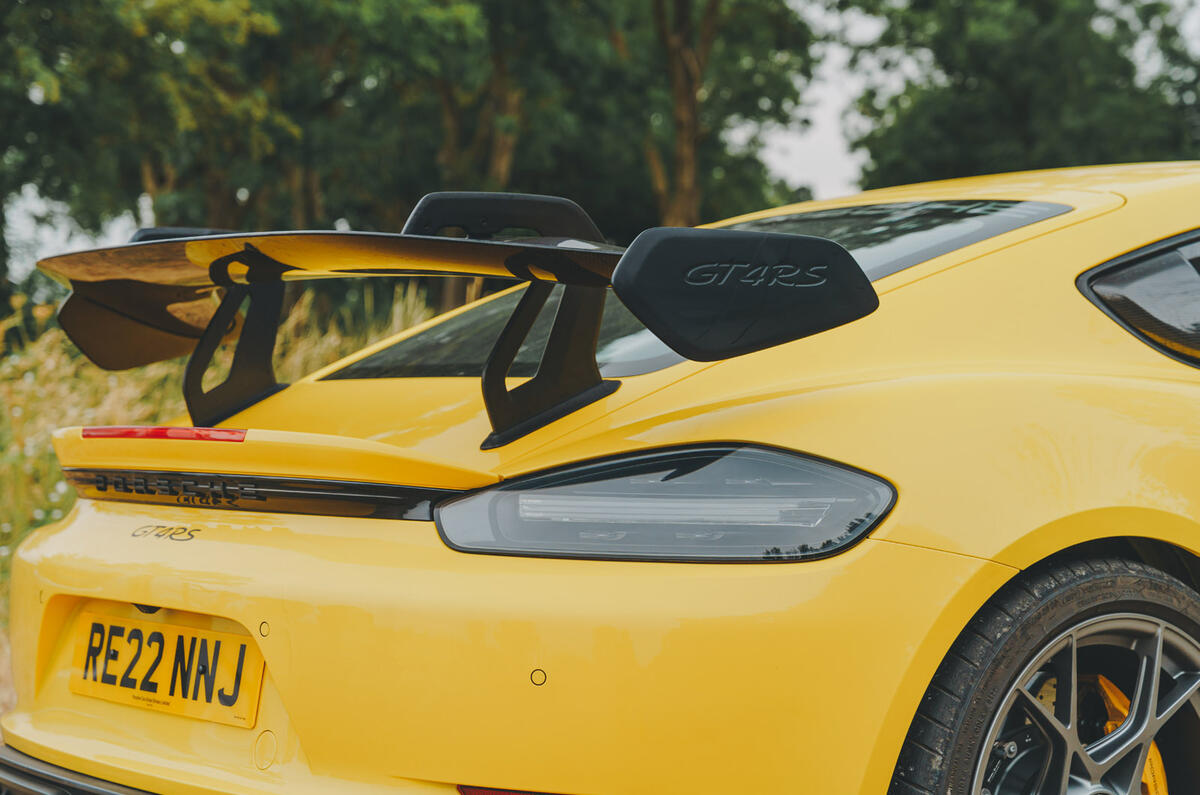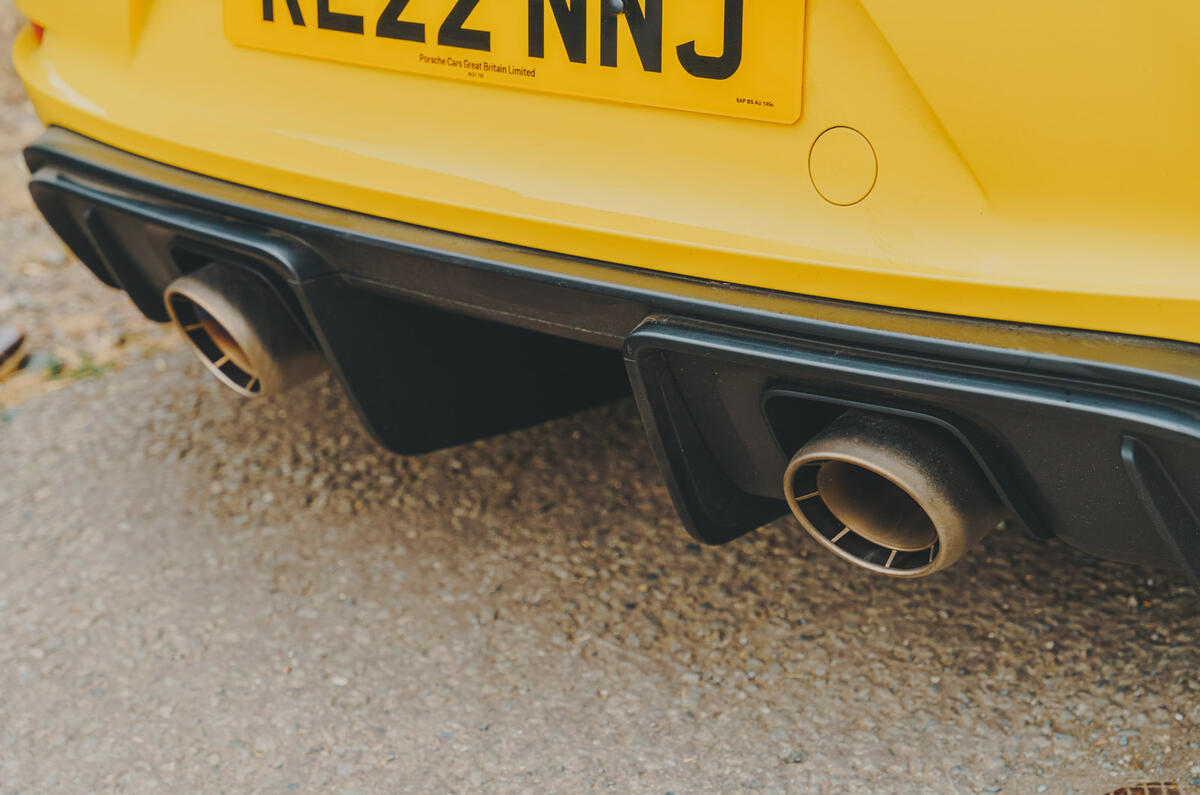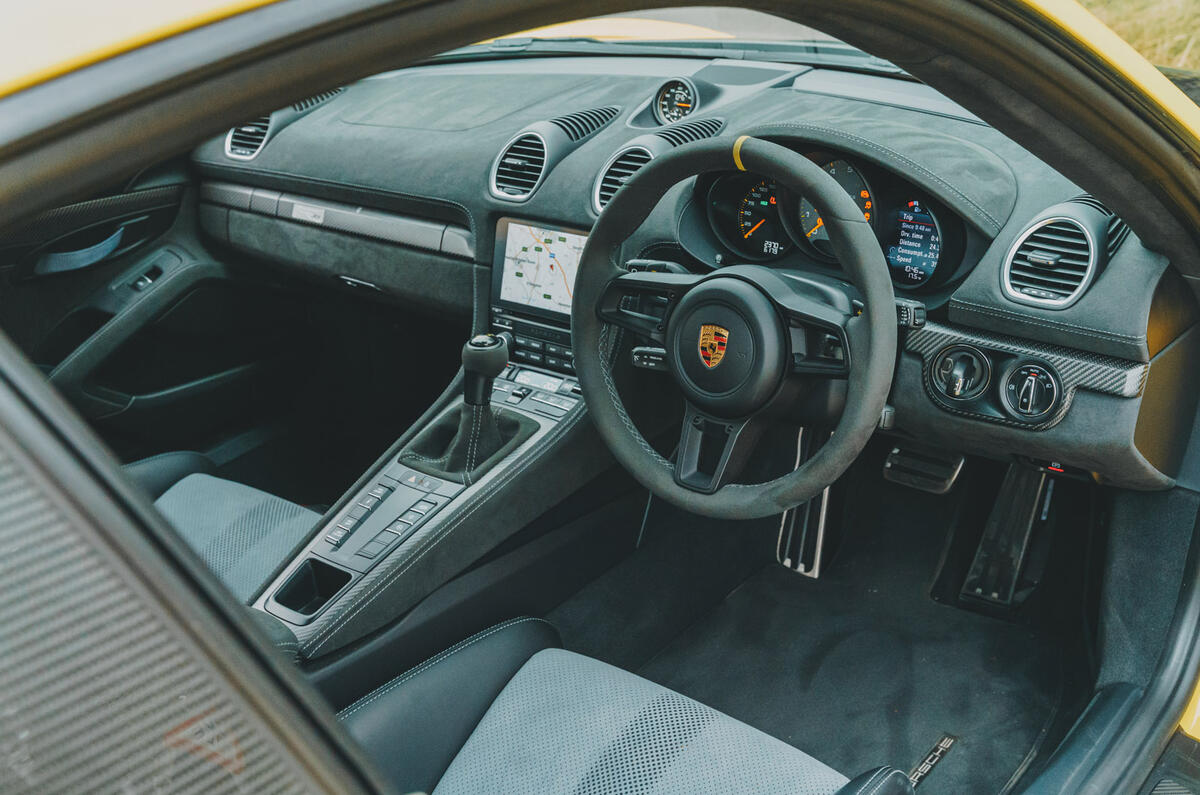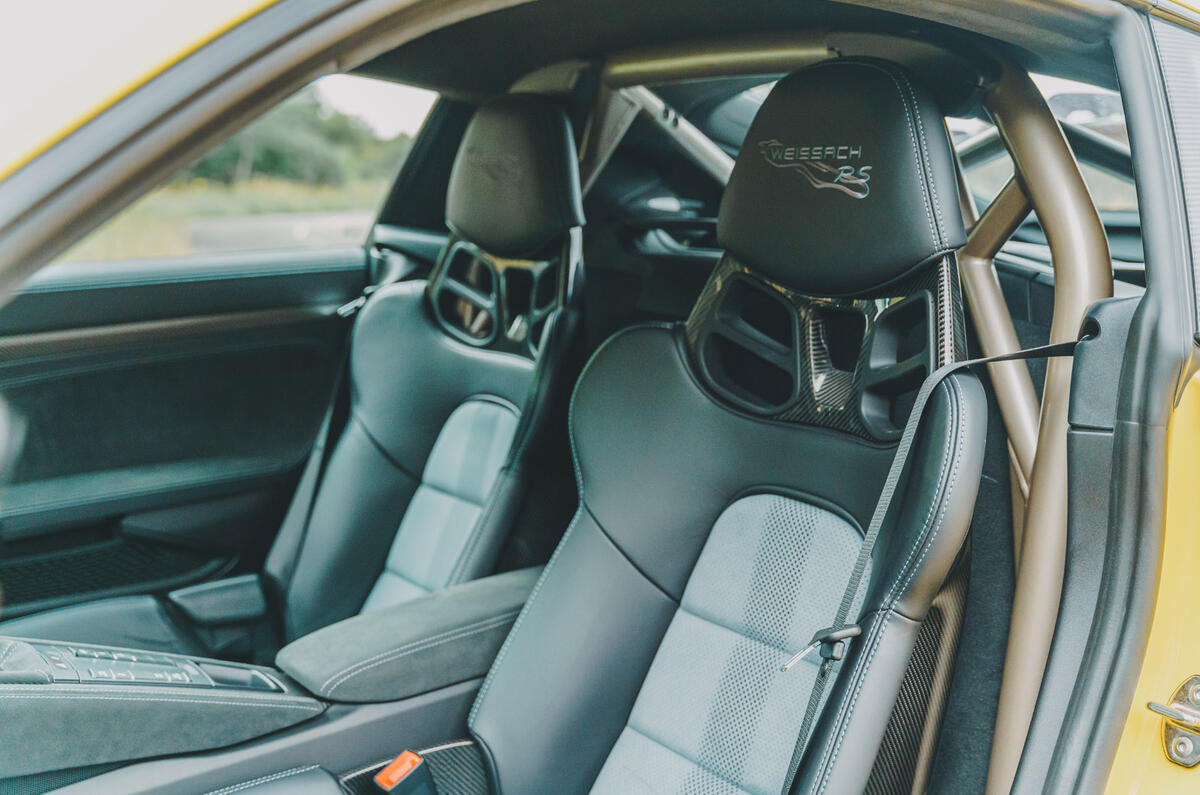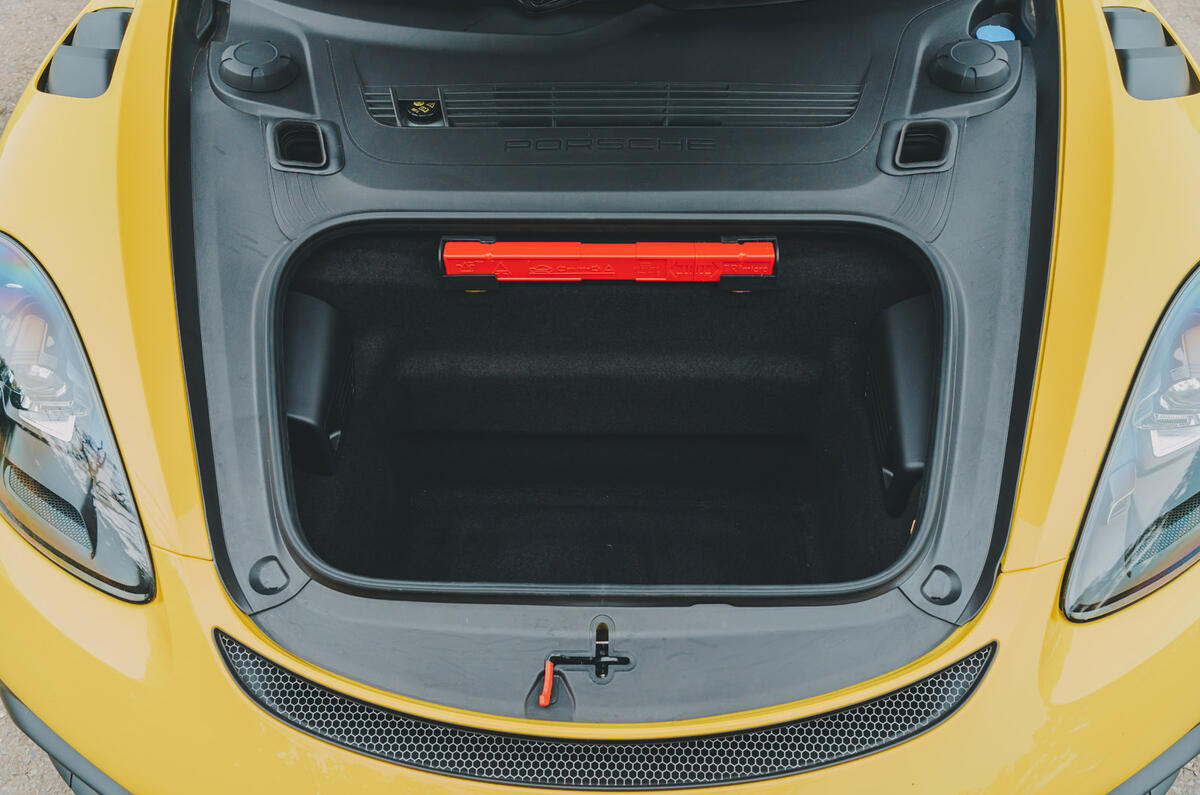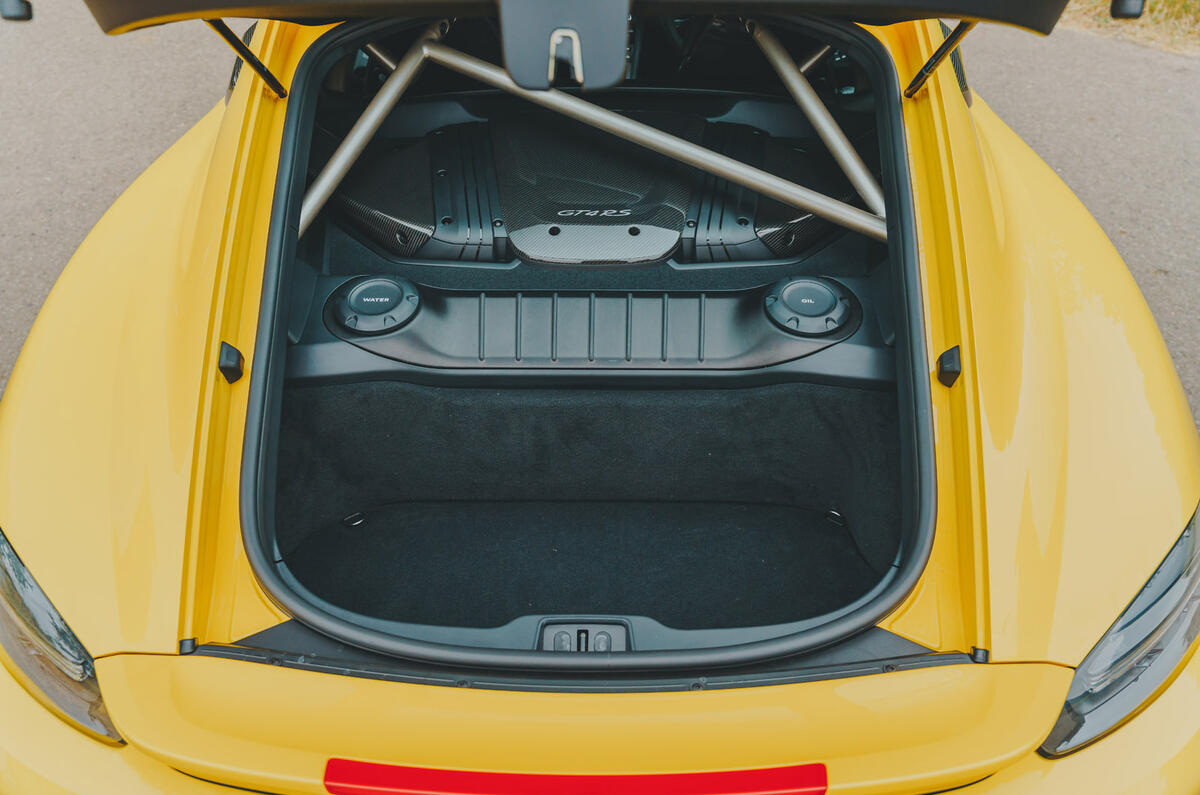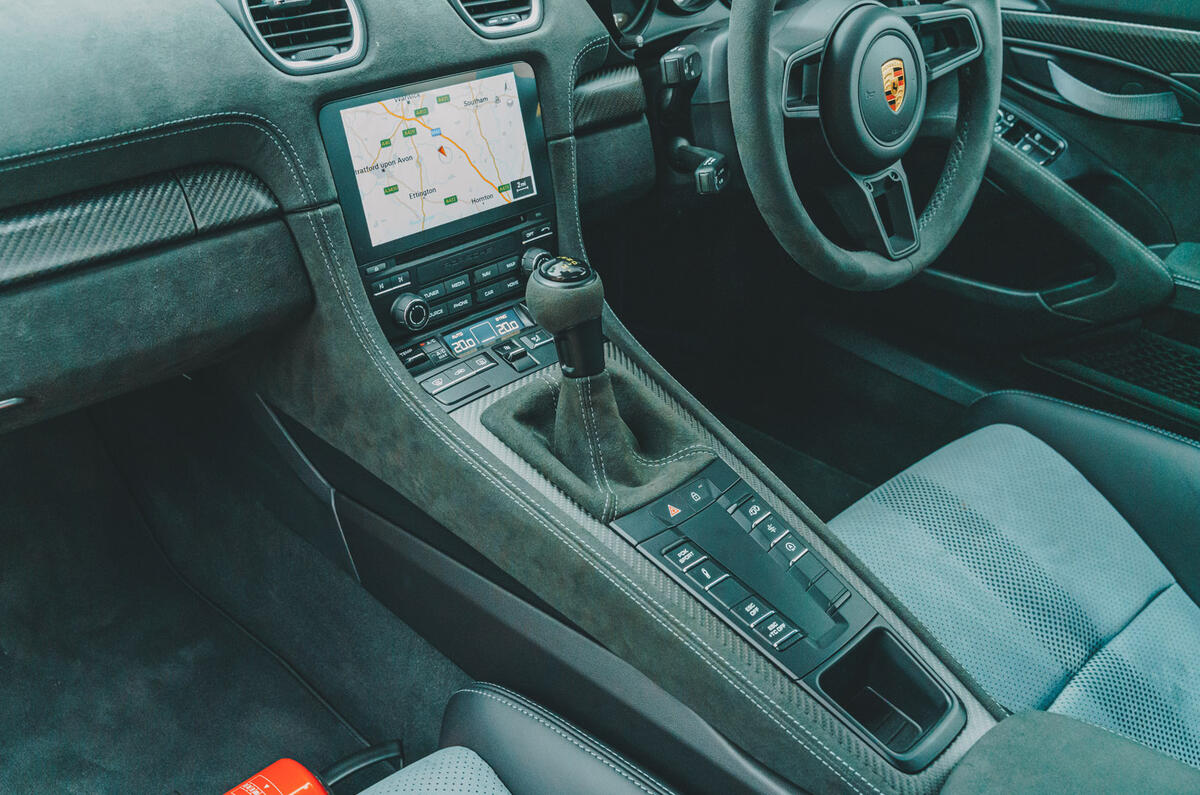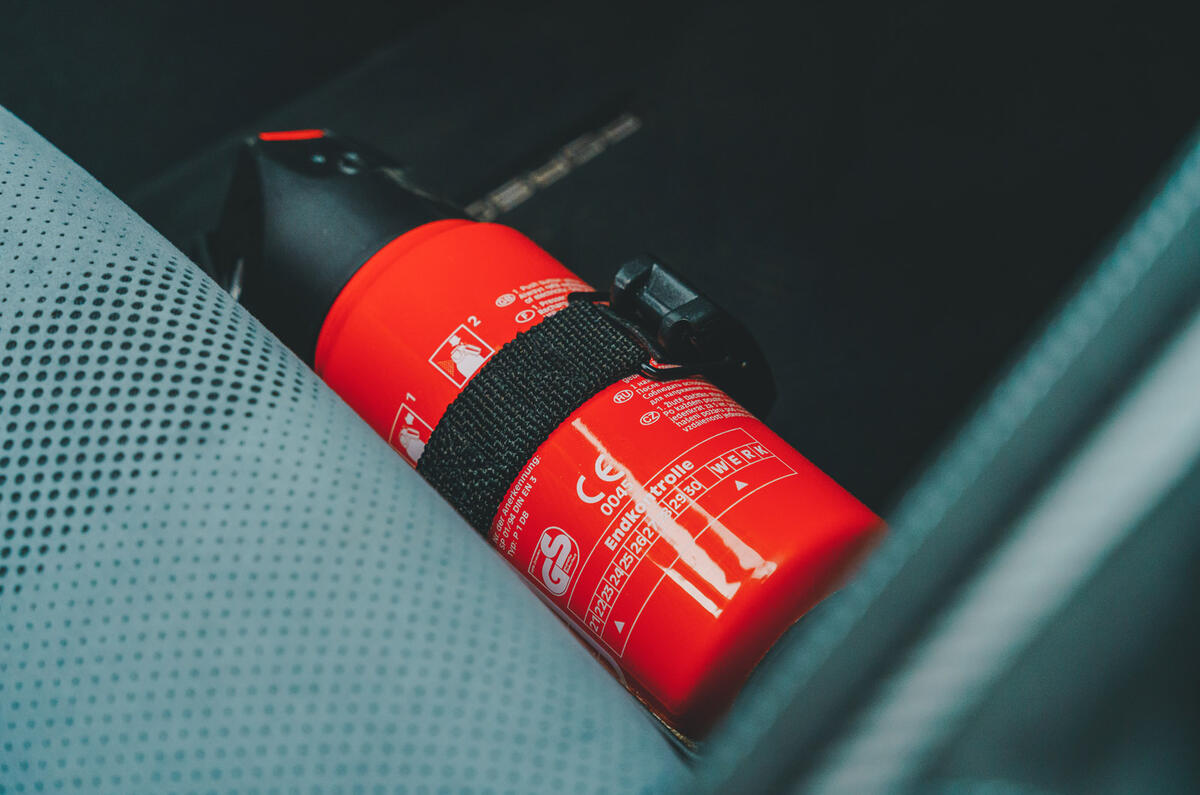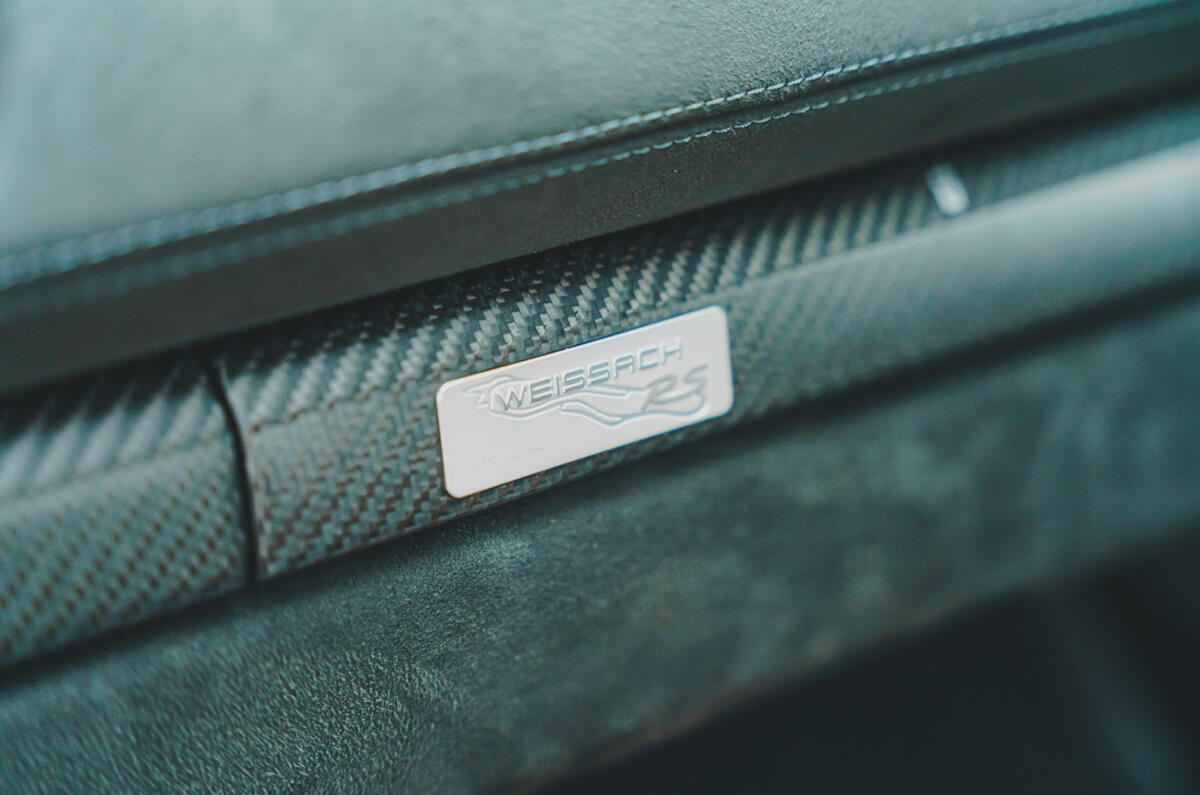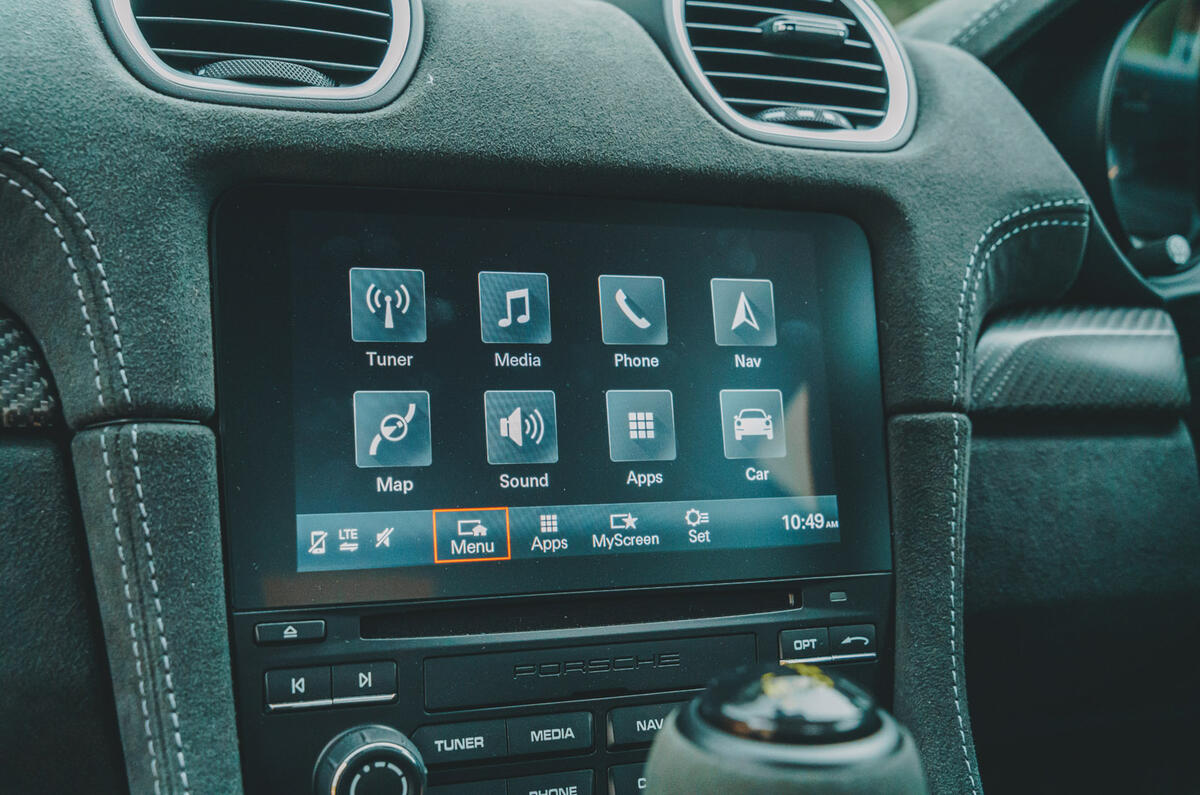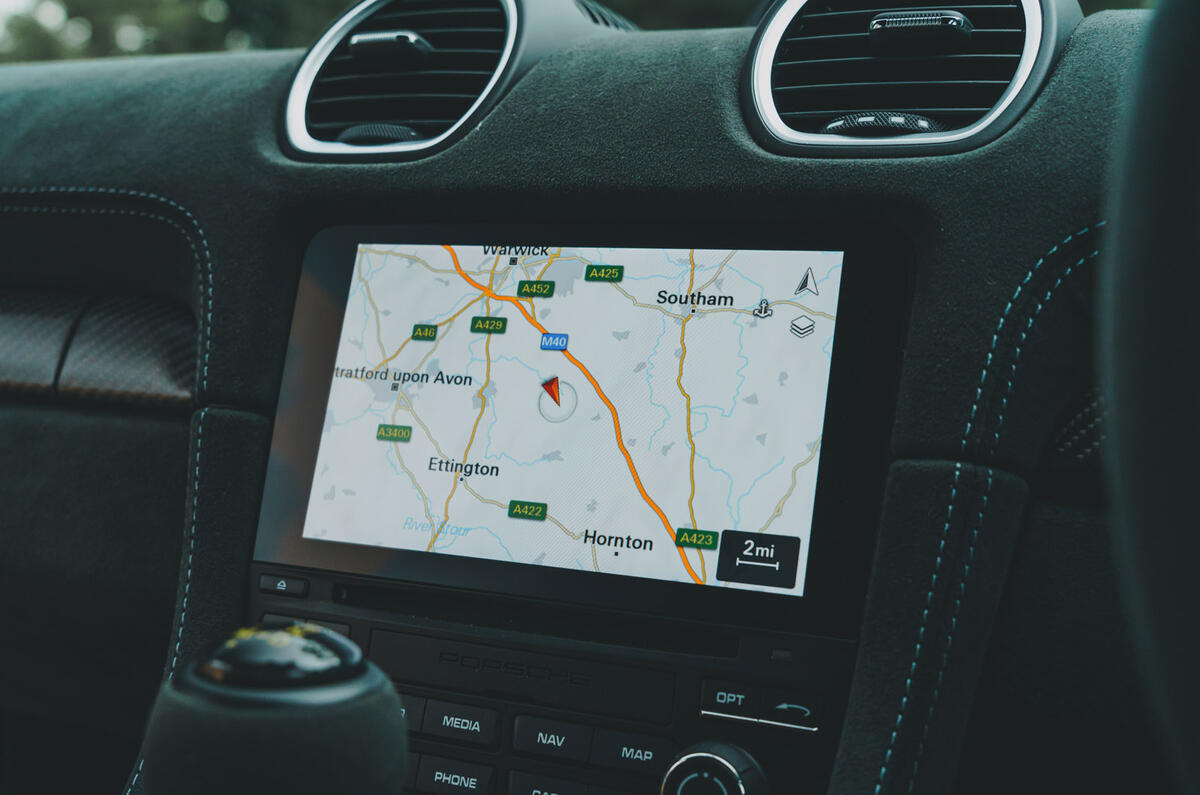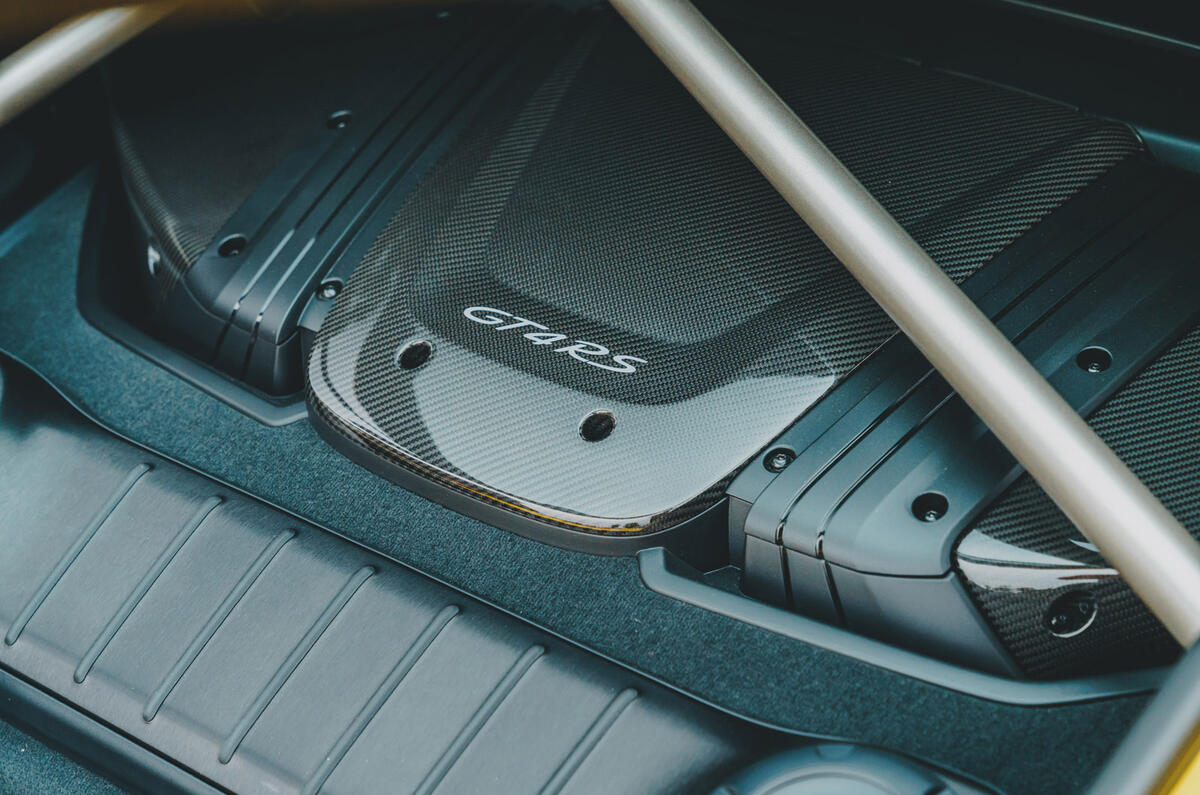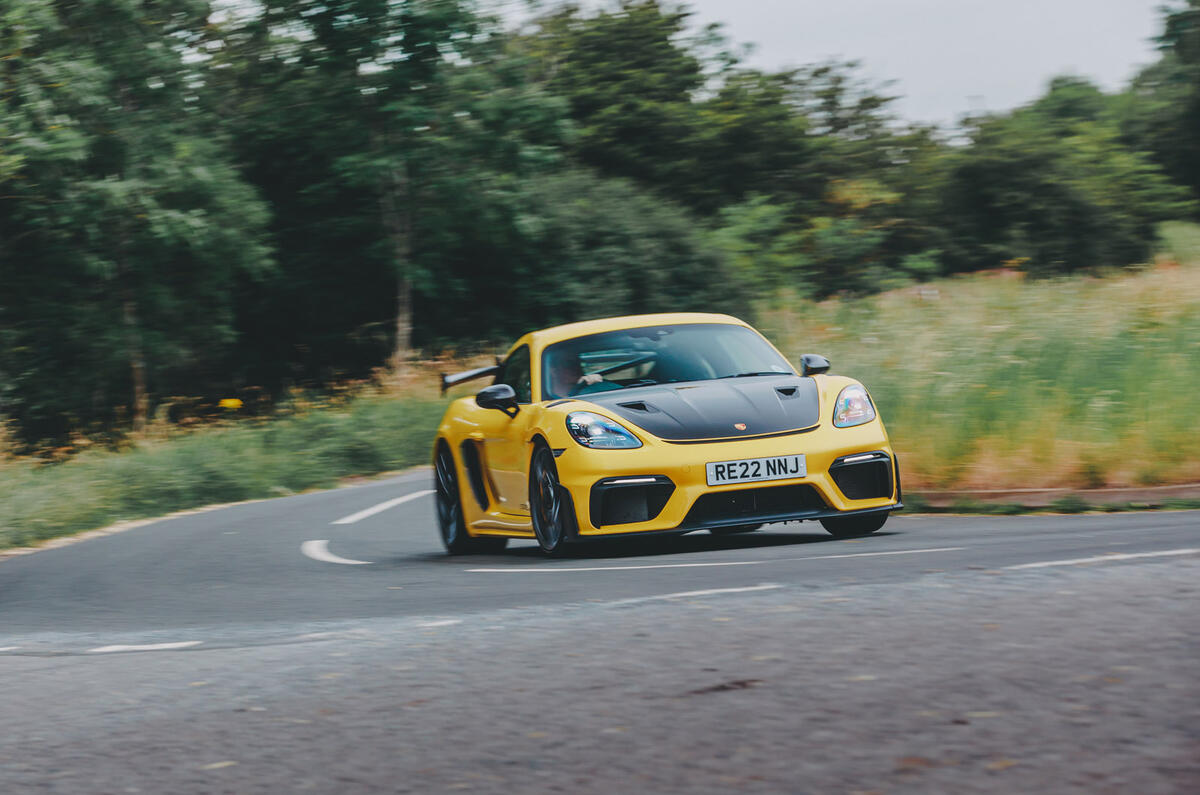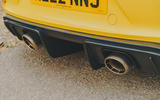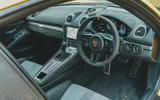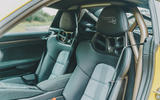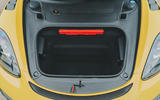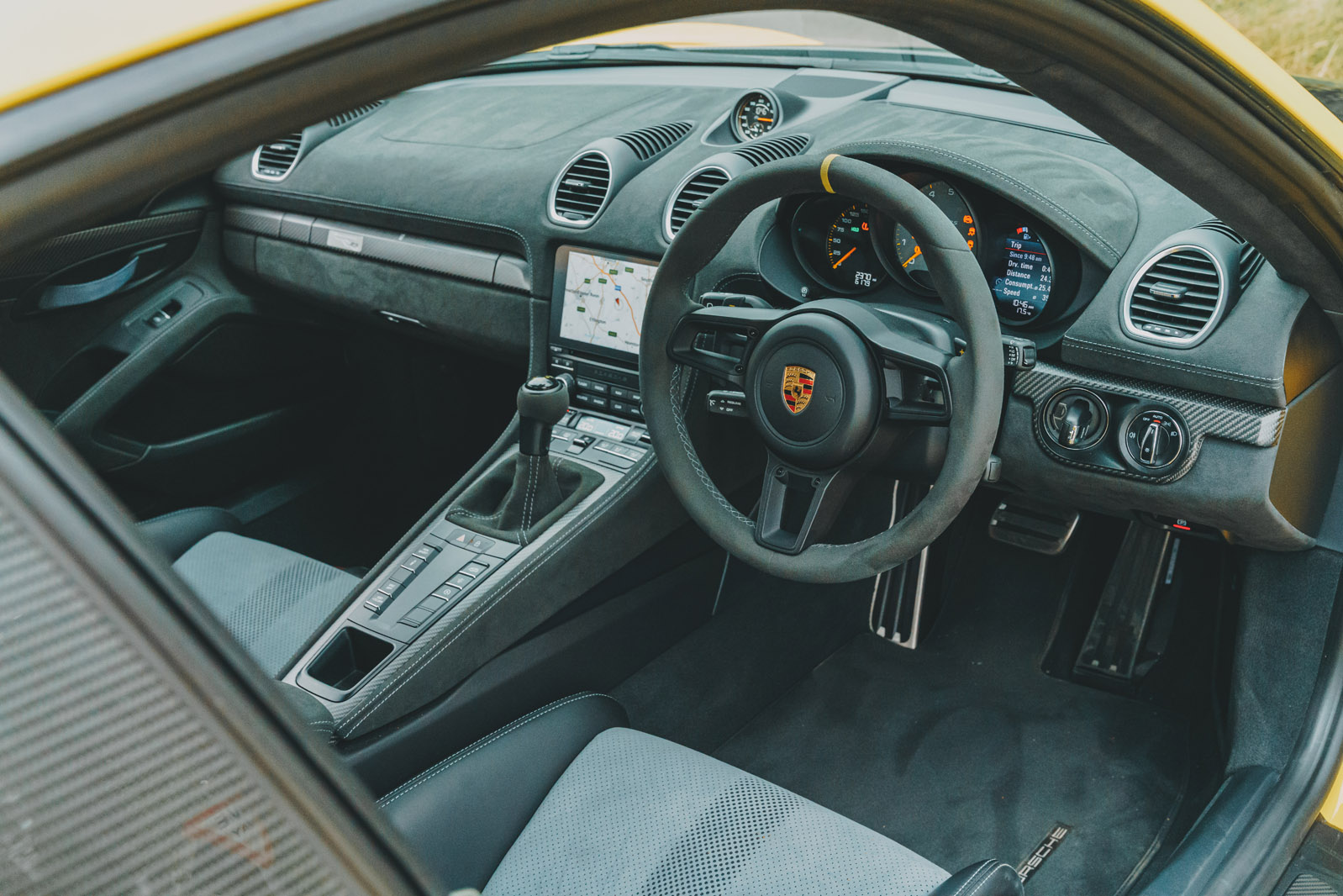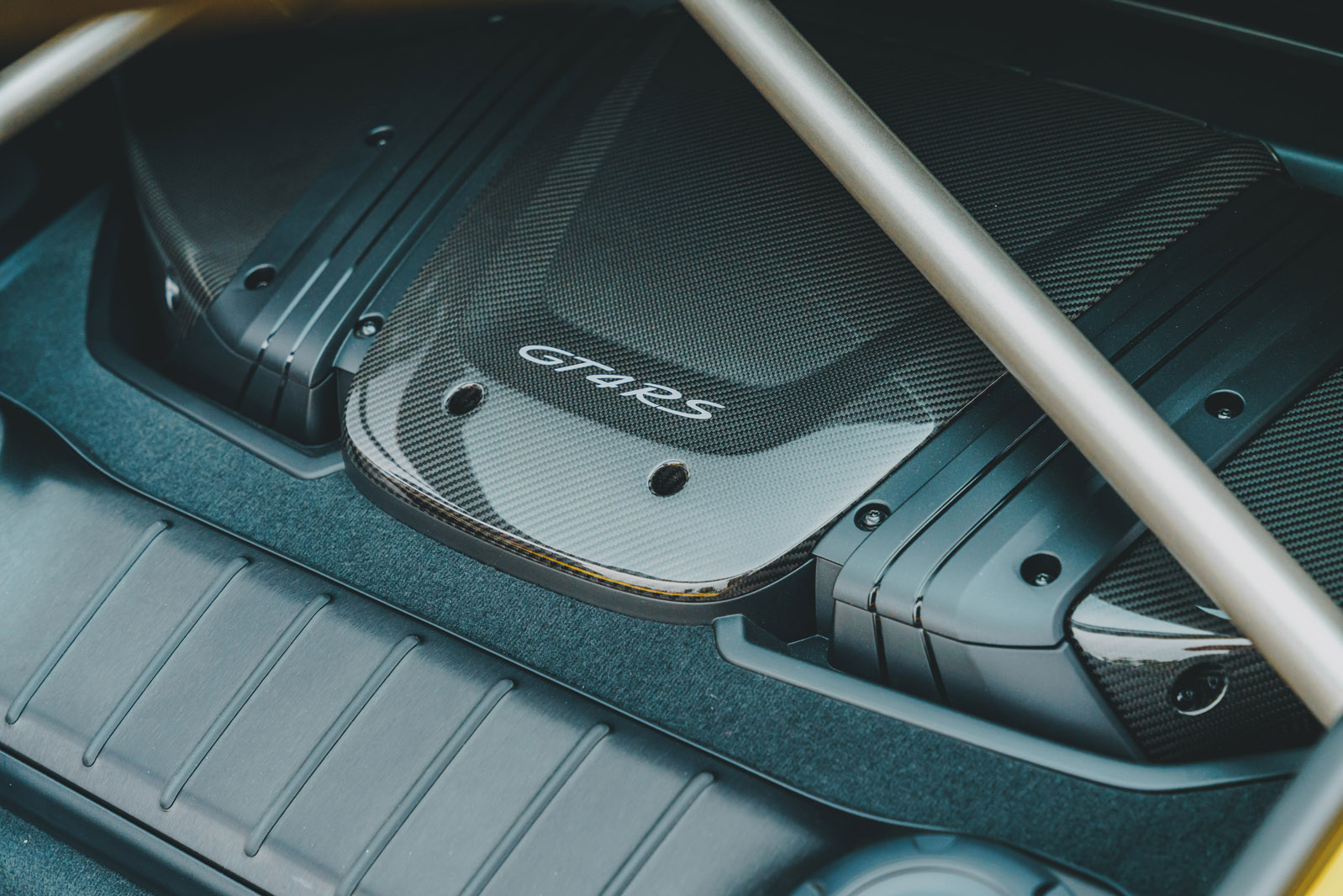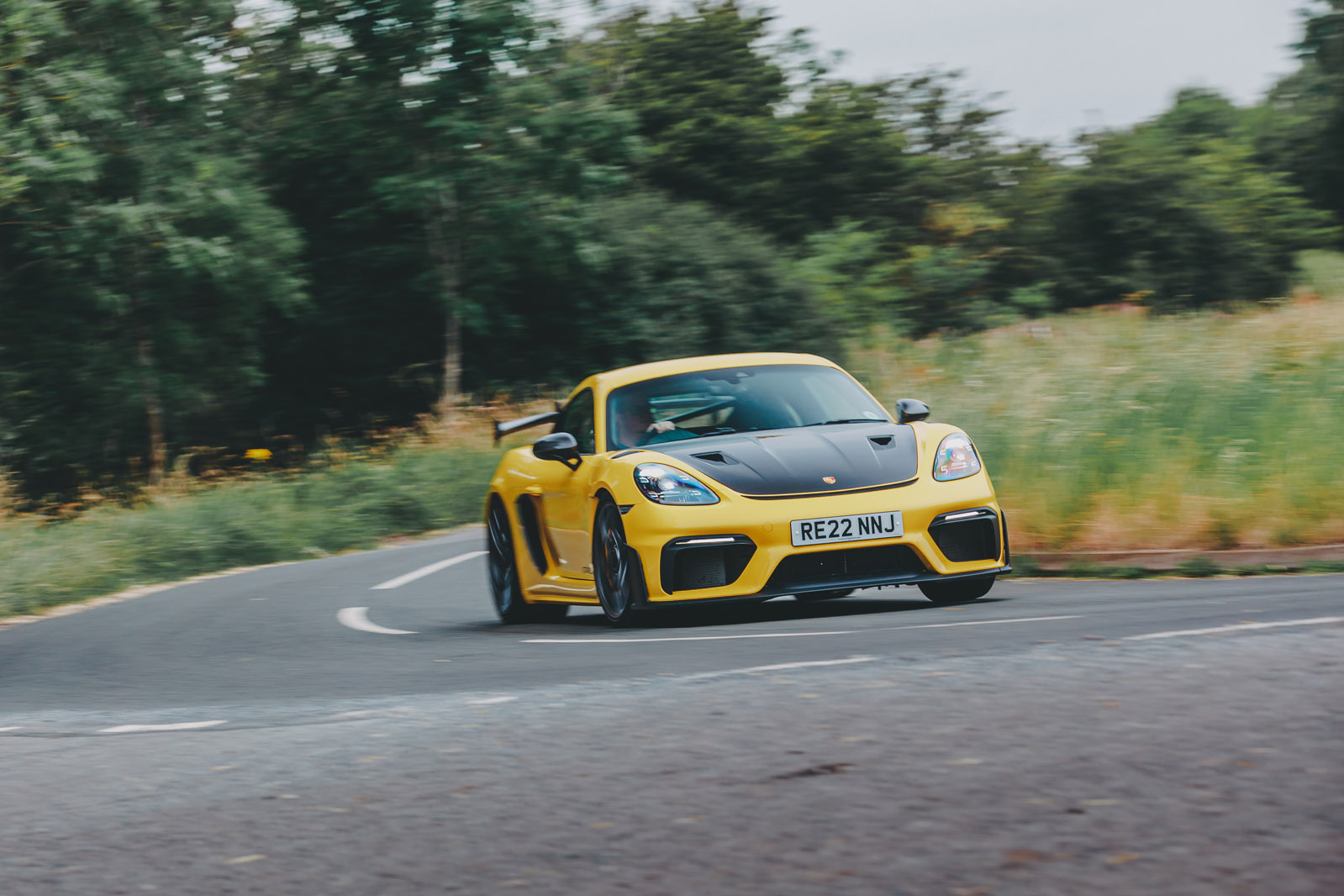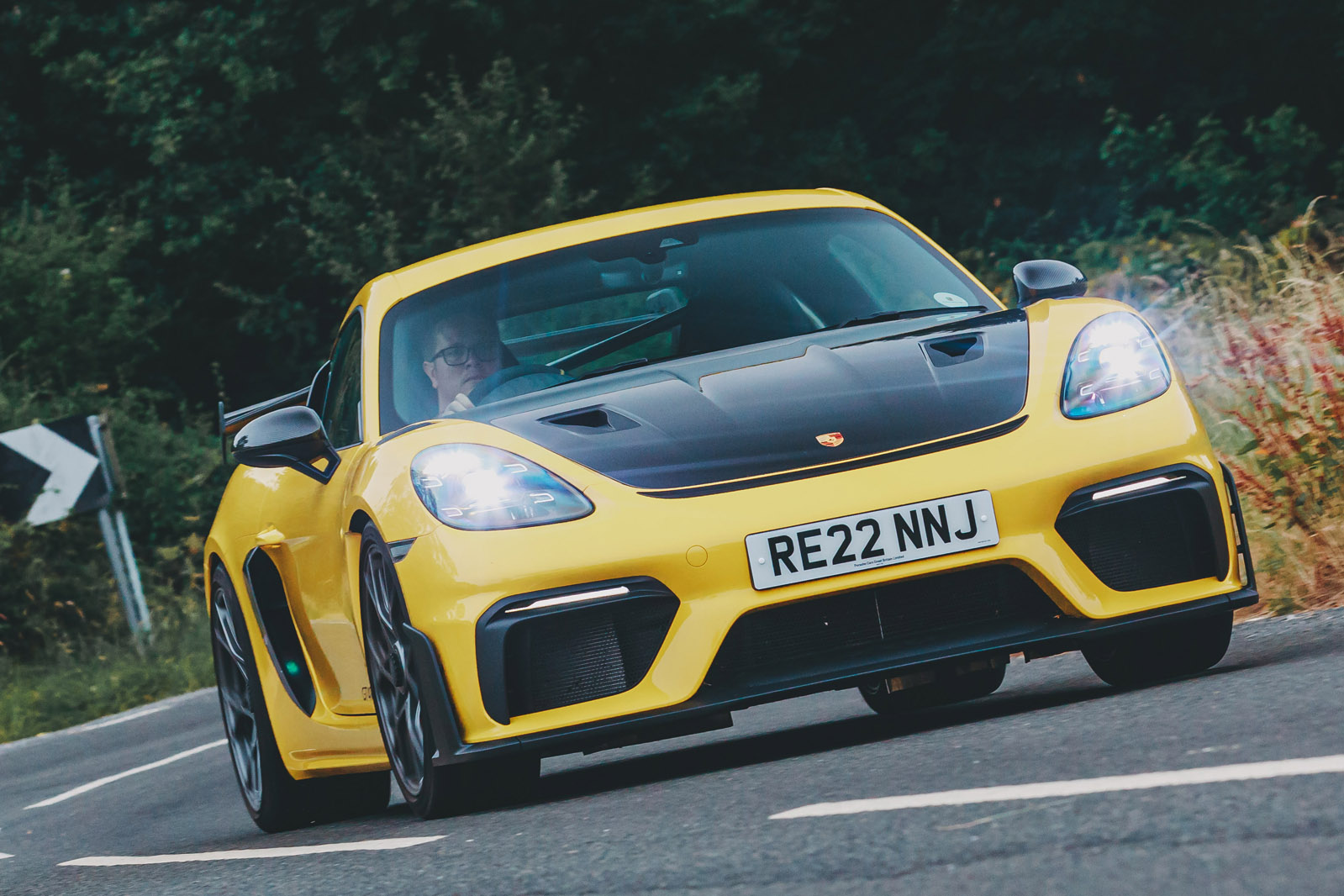The Porsche Cayman has always made a surprisingly usable, habitable kind of two-seater. The funny thing about the Porsche Cayman GT4 RS, wild and madcap as it undoubtedly is in so many ways, is that it doesn’t change that too much.
The car’s optional half roll-cage obviously hasn’t been fitted at the expense of any back seats. That swan-neck rear wing is connected to the usual hatchback bootlid, under which lies a reasonably useful amount of cargo space, even more of which can be found under the carbonfibre-composite nose panel.
The car’s lightweight bucket seats are snug around the hips and need to be berthed a little carefully, but they are perfectly comfortable over longer distances. They are seats whose cushion thickness you can even have tailored to your own body shape and preference, if you like.
You’re couched down extra low at the wheel but feel intimately connected to and at close quarters with the car’s major mechanicals, just as you would want to be, with the steering wheel poking straight out at your sternum. The engine is an unmissable presence so clearly right behind your shoulder, and once the car is moving it rolls around an axis that feels aligned perfectly with your body’s own chest-high centre of mass. As one tester so astutely put it, driving a Cayman feels a lot like paddling a canoe.
The cabin around you is dark and its layout and specification undoubtedly betray the age of the 987-generation base car, with its dinky infotainment screen, mostly analogue instruments and button-busy centre console. In our test car, the whole dashboard came wrapped in dark Dinamica suede for that extra dose of race car flavour. There is carbonfibre decorative trim, too, but not too much of it. Neither is there much at all to take away the focus from what you’re here to do. The 9000rpm rev counter dominates the driver binnacle, while the steering wheel itself hasn’t got a single switch or knob on it. Quite plainly, Porsche isn’t expecting GT4 RS owners to care much about how easy it is to switch between radio stations.
Forward visibility in the GT4 RS is good by sports car standards, but the over-shoulder view is curtailed owing to those quarterlight air intakes and rear-view visibility takes a hit from the presence of that rear wing. Merging from offset junctions can be tricky as a result, at which point you will be worryingly aware of this car’s looming blindspots. It’s nothing you couldn’t tolerate, though, or that doesn’t come with such rarefied sporting territory.
Infotainment

The GT4 RS’s ‘PCM’ touchscreen infotainment system is pretty basic by contemporary standards. It has a 7in screen and wired smartphone mirroring for Apple handsets, but it offers nothing for other formats.
Some networked functionality is offered via a 4G data sim, as well as the PVTS+ vehicle tracking system. But the system’s most popular menus are likely to be those of the Porsche Track Precision lap-timing and performance logging app, which works very well. Regular circuit drivers should consider the loss of these before deciding to have the whole system deleted (as a no-cost option) in order to save weight.
Porsche includes an eight-speaker, 150W Sound Package Plus audio system as standard, which sounds decent and certainly is welcome on longer journeys. You can boost this to a 10-speaker, 505W Bose premium audio set-up, which will cost £834 and some additional weight.


